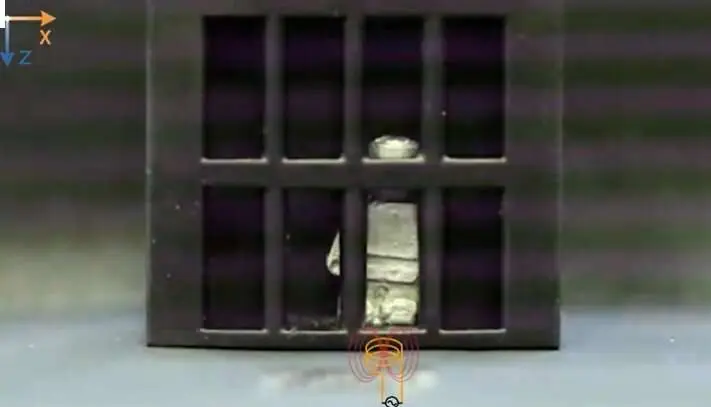Inspired by sea cucumbers, the robots are magnetic and can conduct electricity. Researchers embedded magnetic particles in metal with a very low melting point (29.8 °C). Magnetic particles make the material responsive to an alternating magnetic field. “Giving the human-like robot the ability to switch between liquid and solid states endows them with more functionality,” says Chengfeng Pan, an engineer at The Chinese University of Hong Kong who led the study.

The team created the new phase-shifting material—dubbed a “magnetoactive solid-liquid phase transitional machine”—by embedding magnetic particles in gallium, a metal with a very low melting point (29.8 °C).”The magnetic particles here have two roles,” says senior author and mechanical engineer Carmel Majidi of Carnegie Mellon University. “One is that they make the material responsive to an alternating magnetic field, so you can, through induction, heat up the material and cause the phase change. But the magnetic particles also give the robots mobility and the ability to move in response to the magnetic field.”
This is in contrast to existing phase-shifting materials that rely on heat guns, electrical currents, or other external heat sources to induce solid-to-liquid transformation. The new material also boasts an extremely fluid liquid phase compared to other phase-changing materials, whose “liquid” phases are considerably more viscous. Before exploring potential applications, the team tested the material’s mobility and strength in a variety of contexts.
In one video, a robot shaped like a person liquifies to ooze through a grid after which it is extracted and remolded back into its original shape. “Now, we’re pushing this material system in more practical ways to solve some very specific medical and engineering problems,” says Pan.A video of a robot delivering a drug into a model stomach.
In one experiment, a robot shaped like a person liquefies to ooze through a grid after which it is extracted and remolded back into its original shape. They also demonstrate how the material could work as smart soldering robots for wireless circuit assembly and repair (by oozing into hard-to-reach circuits and acting as both solder and conductor) The team used the robots to remove foreign object from a model stomach and deliver drugs into the same model stomach.
“Future work should further explore how these robots could be used within a biomedical context,” says Majidi. “What we’re showing are just one-off demonstrations, proofs of concept, but much more study will be required to delve into how this could actually be used for drug delivery,” Majidi says.
Read More
- A secure global supply chain is possible with blockchain.
- Using electricity to locate materials that can “learn” is shocking to the system
- Cracking of Eggshells using computing power
- A Way To Help Reduce Global Warming Is Through Solar Energy Conversion


